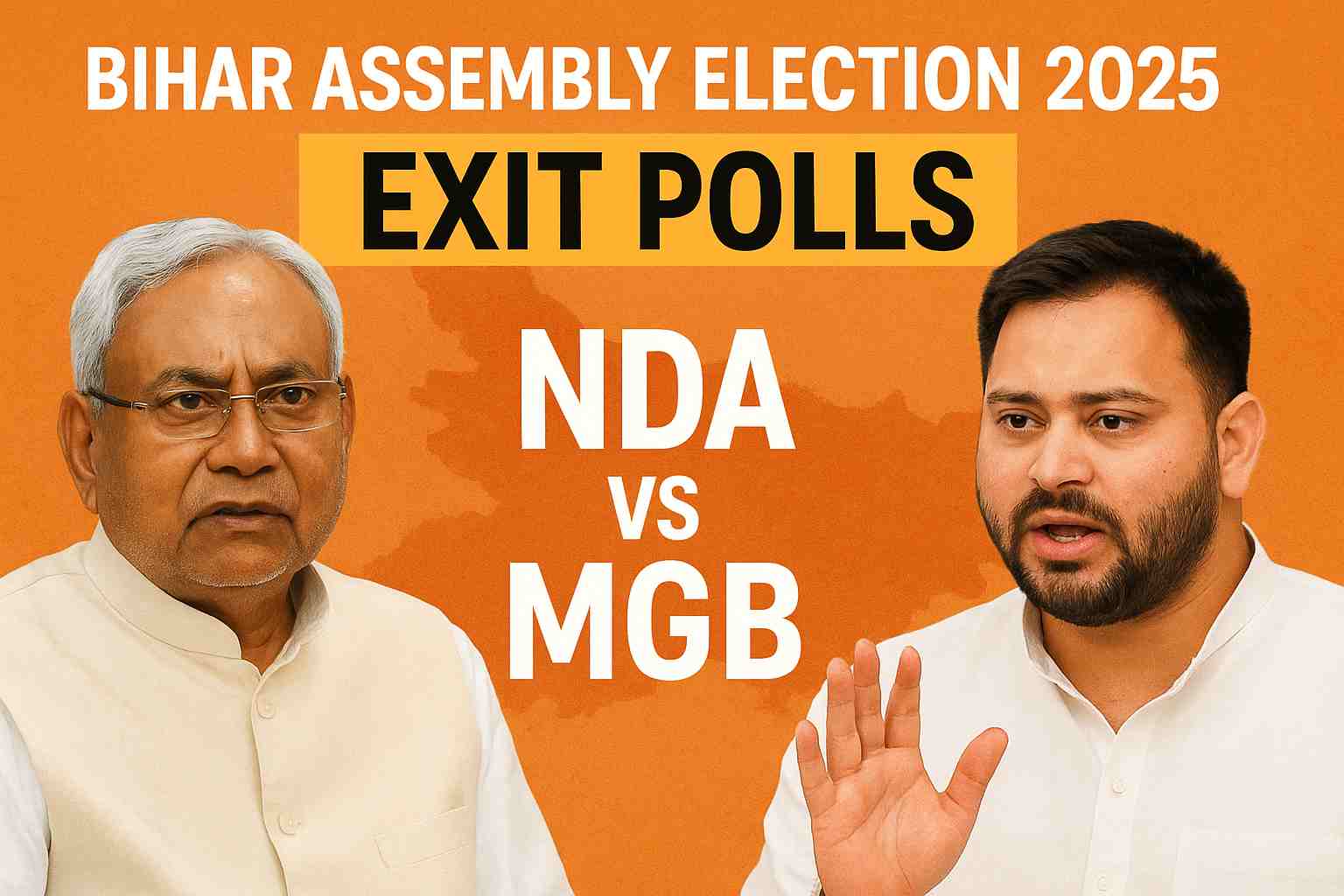The Bihar Election 2025 has generated intense interest across India, and the latest exit-polls give us a snapshot of how the major alliances might fare. According to the report from The Indian Express, several key patterns emerge:
1. Exit-poll predictions for the two major camps
-
Poll agency Axis My India projects the NDA to win 121-141 seats out of the 243-seat Assembly, while the Mahagathbandhan (MGB) is predicted at 98-118 seats.
-
Another agency, Today’s Chanakya, gives an even stronger projection for the NDA: as high as 160+ seats, with the RJD securing around 77 seats and others up to six.
-
Across nine different exit-polls cited: all suggest a clear lead for the NDA.
2. Voter turnout & gender dynamics
-
Bihar recorded a record turnout of 66.91 %, the highest ever for the state.
-
Women’s turnout was particularly notable: 71.6 % compared to 62.8 % among men—a gap of roughly 8.8 percentage points.
-
In absolute numbers, women may have actually out-voted men in this election—a first in the state’s history according to available data.
3. Vote share indicators and preferences
-
Axis My India’s predictions (by vote share) suggest: NDA around 43%, MGB around 41%, and the newer Jan Suraaj Party (JSP) around 4%.
-
When asked who should become Chief Minister, 34% of voters preferred Tejashwi Yadav, while 22% backed Nitish Kumar.
4. Key political personalities & dynamics
-
The long-standing Chief Minister Nitish Kumar of the JD(U), part of the NDA, is looking to continue his two-decade run at the helm of Bihar politics.
-
Tejashwi Yadav, leader of the RJD and backed by Congress, is attempting to break that hold. The shifting alliances make this election especially significant.
-
Tejashwi has raised concerns about alleged slow vote counting and foul play, suggesting heightened tensions ahead of result-day.
5. Regional insights & turnout variation
-
The Seemanchal region (including districts like Kishanganj, Katihar, Purnia) recorded the highest turnout (~73.77%).
-
Conversely, Magadh and Shahabad (traditional MGB strongholds) saw lower turnouts (~63 – 64%), implying a possible shift in regional mobilisation.
What Does It All Mean?
Potential Scenarios Bihar Election 2025
-
If the NDA falls within the lower range of projections (121-141 seats), it could still form a government but may need to manage internal dynamics carefully and possibly seek support.
-
If the higher projections (160+ seats) materialise, the NDA would move into a dominant position, significantly strengthening its leverage in Bihar’s political landscape.
-
For the MGB, even landing at the upper edge of its projected range (around 118 seats) would still mean remaining the opposition—so the exit-polls suggest a tough fight ahead for the alliance.
-
The strong women turnout and higher share for NDA among female voters hint at changing demographics and voting patterns that could reshape future campaigns in Bihar.
Strategic Implications
-
For Nitish Kumar and the NDA: The key will now be converting the “exit-poll momentum” into actual voted mandates when results come on November 14. The leadership and coalition discipline will be under scrutiny.
-
For Tejashwi Yadav and the MGB: These numbers suggest challenges ahead—they will need to leverage their strongholds, increase turnout further, and possibly rethink alliances to reverse the trend.
-
For smaller parties like the JSP: With projections as low as 0-5 seats, their role may be marginal—though they might still play a king-maker role in tighter scenarios.
-
For campaigners and analysts: The gender-gap data and regional turnout variations offer insights for future targeting—especially in mobilising women voters and regions with historically lower participation.
Looking Ahead: What to Watch On Result-Day
-
Actual seat tally vs exit-polls: While exit polls give an indication, they aren’t definitive—unexpected shifts can occur, especially in close races.
-
Coalition dynamics: Even if the NDA wins, how the component parties manage portfolios and power distributions will matter.
-
Turnout vs last election: Comparing 2025 turnout with 2020 numbers will show where gains/losses occurred.
-
Marginal constituencies: The ones leaned either way, especially in Seemanchal and Magadh—results from there will reflect deeper trends.
-
Policy promises vs reality: Post-election, implementation of key promises (women’s welfare, regional development, employment) will discriminate credibility.
Conclusion
The exit-polls for the Bihar Election 2025 suggest an edge for the NDA, backed by strong turnout (especially from women) and favourable vote-share projections. While the MGB retains a significant presence, the challenge for them is converting support into seats at scale. For political watchers, the coming days until result declaration on November 14 will be crucial—both in terms of numbers and the strategic implications for Bihar’s future governance.



